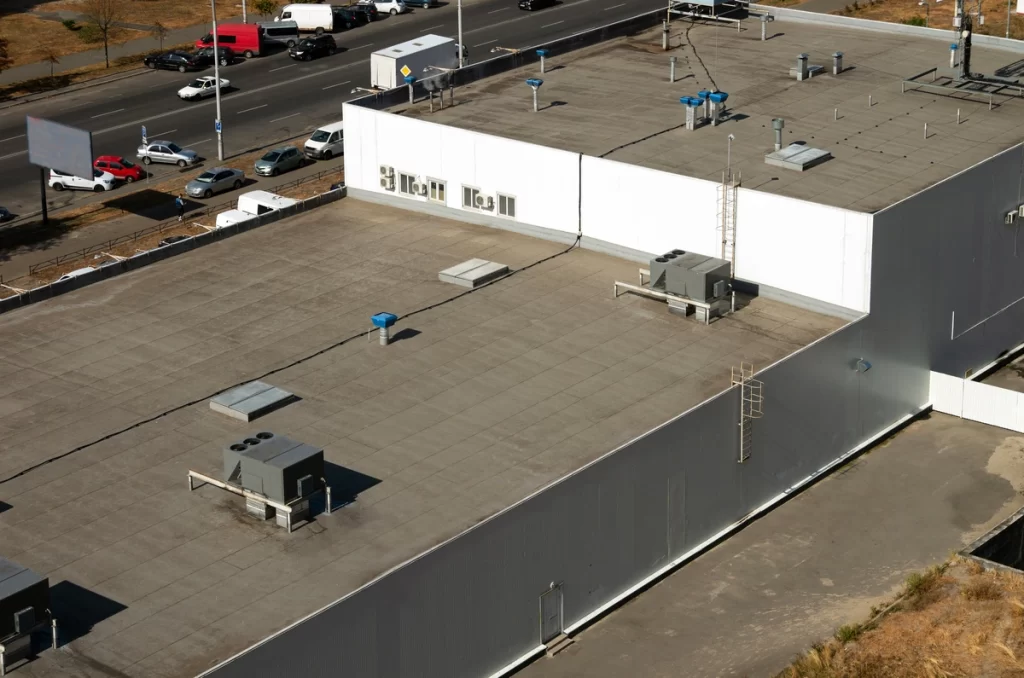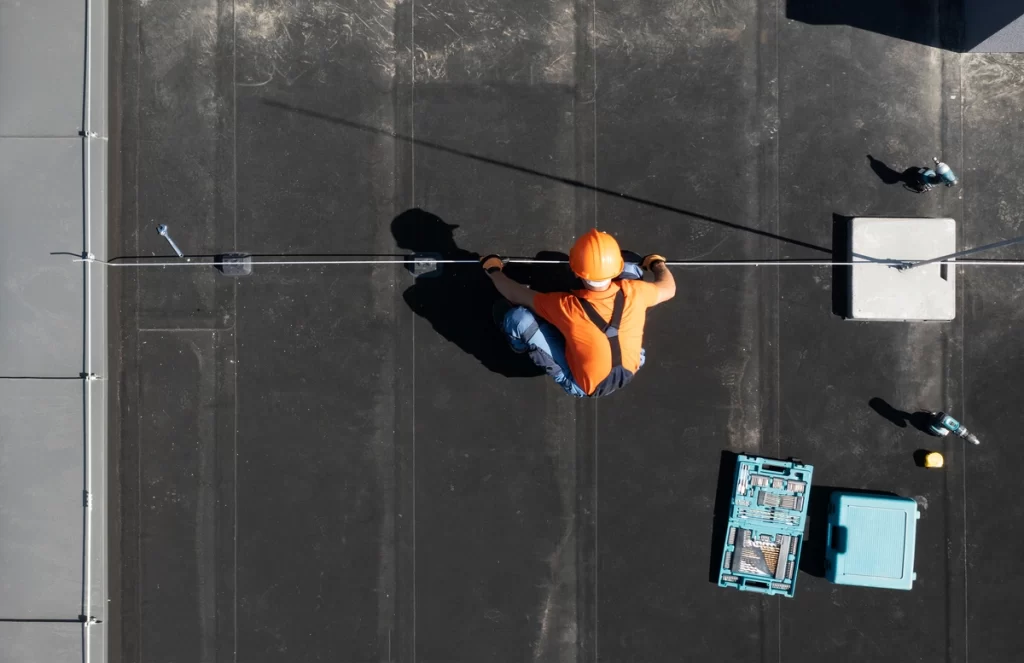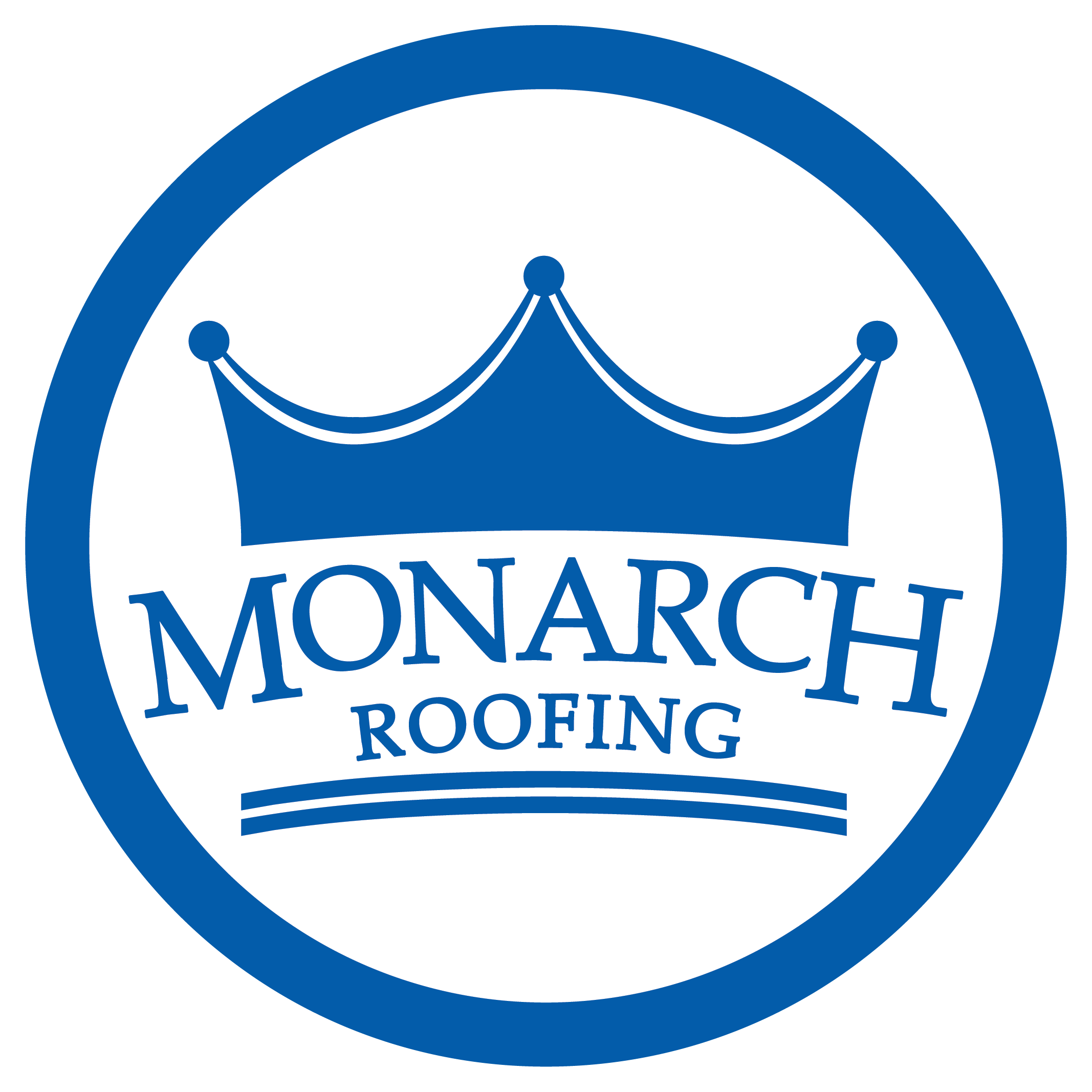Maintaining a commercial roof is crucial for the longevity of your building and the safety of its occupants. For building owners and facility managers, understanding the intricacies of commercial roof maintenance can save you from:
- Significant costs
- Damage and prevent
- Major disruptions down the line
This detailed guide aims to arm you with the knowledge you need to keep your commercial roof in excellent condition.
The Importance of Commercial Roof Maintenance
Commercial roof maintenance is key, if your goal is to:
- Protect Your Investment: A commercial building is a significant investment, and the roof is one of its most critical components. Proper maintenance ensures that your investment remains protected by preventing costly repairs and extending the lifespan of the roof.
- Ensure Safety: A well-maintained roof protects the building’s occupants and contents from weather-related damages. Leaks, mold, and structural weaknesses can pose serious health risks and safety hazards.
- Enhance Energy Efficiency: Regular roof maintenance helps maintain the building’s energy efficiency. Damaged roofs can lead to unwanted heat loss or gain, increasing your energy bills and reducing the comfort level of your indoor spaces.
- Avoid Legal Issues: Neglecting roof maintenance can lead to compliance issues and potential lawsuits. Regular inspections and timely repairs ensure that your building meets local regulations and safety standards.
What Makes Commercial Roofs Different?

Commercial roofs differ from residential roofs in several ways, each requiring specific maintenance strategies.
Larger Surface Area
Commercial roofs typically cover a larger area, making them susceptible to more wear and tear. The larger surface area also means more opportunities for water pooling and debris accumulation.
Flat or Low-Slope Design
Most commercial roofs are flat or have a low slope, unlike the steep slopes seen in residential roofing. This design makes water drainage more challenging, increasing the risk of leaks and water damage.
Variety of Materials
Commercial roofs are made from a variety of materials, including TPO, EPDM, PVC, and built-up roofing (BUR). Each material has unique maintenance requirements and vulnerabilities.
HVAC Units and Other Equipment
Commercial roofs often house HVAC units, vents, and other equipment. These installations can cause additional wear and tear and create potential weak points that need regular inspection.
Common Signs of Roof Damage
Being aware of the signs of roof damage can help you address issues before they escalate.
Leaks and Water Stains
Water stains on ceilings or walls are clear indicators of a leak. Even small leaks can indicate a larger underlying issue that needs immediate attention.
Ponding Water
Water that pools on the roof for more than 48 hours can cause significant damage. Ponding water can lead to roof membrane deterioration, plant growth, and increased load on the roof structure.
Blistering and Bubbling
Blistering and bubbling on the roof surface are signs of trapped moisture or air. This can weaken the roofing material and lead to leaks.
Cracks and Splits
Cracks and splits in the roofing material can occur due to weathering, thermal expansion, and contraction. These openings allow water to penetrate, leading to further damage.
Vegetation Growth
Moss, algae, and other vegetation can grow on poorly maintained roofs. Vegetation can trap moisture and degrade the roofing material, leading to leaks and structural damage.
How Maintenance Can Help Avoid Damage
Regular maintenance is key to preventing roof damage and extending its lifespan.
- Early Detection of Issues: Routine inspections help identify minor issues before they become major problems. Early detection allows for timely repairs, saving you from costly fixes in the future.
- Prolonged Roof Lifespan: Consistent maintenance can significantly extend the lifespan of your commercial roof. A well-maintained roof can last up to 25 years or more, depending on the material and environmental conditions.
- Cost Savings: Preventative maintenance is always more cost-effective than reactive repairs. Regularly scheduled inspections and minor repairs can save you from expensive emergency repairs and roof replacements.
8 Maintenance Tips for Commercial Roofs

Implementing a proactive maintenance plan ensures your commercial roof remains in top condition.
1) Schedule Regular Inspections
Regular roof inspections are crucial for identifying potential issues. Aim to inspect your roof at least twice a year, preferably in spring and fall. Additionally, perform inspections after severe weather events.
2) Clean Gutters and Drains
Clogged gutters and drains can cause water to back up and pool on the roof. Regularly clean gutters and downspouts to ensure proper water drainage.
3) Remove Debris
Debris such as leaves, branches, and dirt can accumulate on the roof, causing damage and blocking drainage systems. Regularly remove debris to prevent these issues.
4) Check for Signs of Wear and Tear
During inspections, look for signs of wear and tear, such as cracks, splits, and blisters. Address these issues promptly to prevent further damage.
5) Inspect Flashings and Seals
Flashings and seals around roof penetrations, such as vents and HVAC units, are common weak points. Ensure they are intact and properly sealed to prevent leaks.
6) Trim Overhanging Trees
Overhanging tree branches can scrape and damage the roof surface. Trim back any branches that hang over the roof to prevent this damage.
7) Monitor Roof Traffic
Limit roof access to authorized personnel only. Excessive foot traffic can cause damage to the roofing material. Use designated walkways and protective mats to minimize damage.
8) Keep Records
Maintain detailed records of all inspections, repairs, and maintenance activities. This documentation helps track the roof’s condition over time and provides valuable information in case of warranty claims or insurance issues.
How Often Should You Maintain Your Roof?
The frequency of roof maintenance depends on several factors, including the roof’s age, material, and environmental conditions.
Biannual Inspections
Conduct thorough roof inspections at least twice a year, in spring and fall. These inspections help identify any damage caused by seasonal changes and prepare the roof for upcoming weather conditions.
Post-Storm Inspections
Inspect the roof after severe weather events, such as storms, hurricanes, and heavy snowfall. These inspections help identify and address any damage caused by extreme weather.
Monthly Walkthroughs
Perform monthly walkthroughs to check for visible signs of damage, debris accumulation, and water pooling. Monthly checks help catch minor issues before they escalate.
Regular Cleaning
Clean gutters, drains, and the roof surface regularly to prevent water buildup and debris accumulation. The frequency of cleaning depends on the surrounding environment and weather conditions.
Join Monarch Roofing’s Maintenance Plan
At Monarch Roofing, we work hard to make sure that taking care of your roof is simple. We do that by offering a comprehensive maintenance program that includes:
- 2 inspections a year
- Includes inspections after a named storm or significant hail damage
- Checks for all roof penetrations and replace/repair as needed
- Cleaning of minor debris (tree branches, leaves)
- Checking for signs of leaks
- Checking all drip edge and or coping
- Completed and signed maintenance checklist
- Photo report with details
Schedule Your Appointment Today
Proper commercial roof maintenance is essential for protecting your investment, ensuring safety, enhancing energy efficiency, and avoiding legal issues. By understanding the unique characteristics of commercial roofs, recognizing common signs of damage, and implementing a proactive maintenance plan, building owners and facility managers can extend the lifespan of their roofs and save on costly repairs.
Regular inspections, cleaning, and timely repairs are key to maintaining the integrity of your commercial roof. Remember to document all maintenance activities and seek professional help when needed. By prioritizing roof maintenance, you can ensure the long-term success and safety of your commercial building.
For personalized advice and professional maintenance services, contact our team of experts today. We offer comprehensive roof maintenance plans tailored to your specific needs. Don’t wait until it’s too late—protect your investment and ensure the longevity of your commercial roof.





